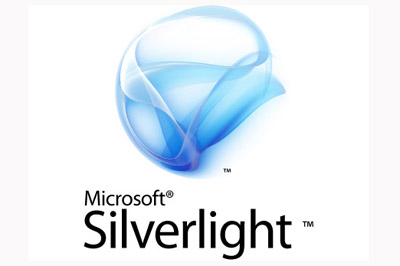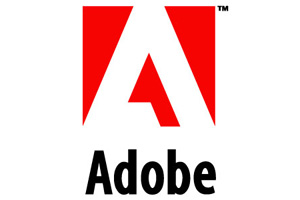Need to Know: Microsoft Silverlight 3
Amongst a flurry of new announcements, Microsoft has updated Silverlight and its related Expression development tool to version 3 – we explain what’s new.


Microsoft has updated its Flash rival Silverlight, bringing it up to the third version. You may have been asked to download it while surfing a Microsoft site - if you've wondered exactly what it is, read on.
What exactly is Silverlight?
Silverlight is Microsoft's arch-rival to Adobe Flash, which brings rich animation and graphics to your web browser.
It's compatible with all the major browser and runs on Microsoft's .NET Framework, so it requires a small plug-in to work, though if your Windows is fully patched, you're likely to have it installed already.
The first version of Silverlight was launched in April 2007, while version 2 arrived in 2008. It runs on Windows and Mac and even Linux. The latter is developed by Novell in conjunction with Microsoft, a project known as Moonlight.
What's the big deal with Version 3?
Microsoft has just taken the beta out of version 3, though as it's pleased to admit, very little has changed now that it's fully shipping.
Get the ITPro daily newsletter
Sign up today and you will receive a free copy of our Future Focus 2025 report - the leading guidance on AI, cybersecurity and other IT challenges as per 700+ senior executives
The main features in version 3 are include support for HD video content, which can be streamed in any codec that Silverlight supports, whether it be Microsoft's own VC-1 or H.264. The popular AAC audio decoding format is also now supported. Microsoft claims the performance is better than ever and refers to the technology as SmoothStream'.
Silverlight 3 also now supports graphics chip hardware acceleration. Even the integrated graphics in laptops are now of reasonable quality and speed so it makes sense to take advantage of these. The developer can tell Silverlight to look for a Graphics Processing Unit (GPU) and if it finds one is can render the images much more efficiently, creating a better experience for the user. If there's no hardware support the feature will still run just not as quickly.
Developers will also be able to take advantage of pixel shaders that are now standard on modern graphics chips, enabling the use of more advanced effects such as blurring or warping.
Another cool new feature is called Perspective 3D', which enables developers to simulate a rotating object in 3D space. This will allow effects similar to Apple's Cover Flow, but on the web, too.
Anything else to get excited about?
The problem with Silverlight and Flash is that it's been very hard to optimise them for search engines. Silverlight 3 uses dynamic data using RIA services, the practical benefit of which is that you can use the back and forwards buttons in your browser and see the behaviour you would expect.
Another advantage is that it provides deep linking, which is not only great for Google or should that be Bing? but also for people. You can send someone a link to from the middle of a Silverlight 3 experience' and that person will be able to open the same page - which is nice.
Silverlight 3 content is now more flexible as it can also run offline on a local system in what is known as a Sandbox', similar to Adobe Air and Google Gears.
So how to I create Silverlight content?
The best way to create Silverlight content is inside the Expression development tool. Microsoft has said that Expression Studio 3 will be available within 30 days. There are three versions Expression Studio, Expression Web, and Expression Profession Subscription.
Expression Web now includes Expression Encoder, for creating Silverlight compatible content, and Expression Design, for creating vector based graphics. Both of these are up to version 2.0 and both are included in the box.
Also available in the package is the Deep Zoom Composer, which enables you to efficiently stream high res images as used by the Hard Rock Cafe
One of the features that Microsoft is most proud of its the Super Preview. It enables you to compare how your content will look in multiple browsers such as Internet Explorer 6, 7 and 8 on one machine without having to use a virtual machine, which really reduces the strain on system resources. You can also compare with Firefox and Safari and all versions can even be overlaid on top of each other to visualise the differences.
The new version of Expression web enhances support for PHP, with improved understanding of PHP syntax and libraries, and again with the preview dynamic preview of pages means you can see how the content will look without having to load up the PHP on a web server.
Sounds good. So what are the benefits to developing in Silverlight?
Mark Quirk, web product manager for Microsoft, said that the main benefit of working in Silverlight is speed to market, thanks to an easy and efficient workflow. He claimed that the developer working in Visual Studio and the designer working in Expression are using exactly the same file formats, which can really speed development time up.
Also, if your developers are familiar with the .NET Framework, then the same skills can be reused.
Read on to find out if Microsoft can make Silverlight a success.
Want to read more background on the latest IT topics? Click here for all the tech cheatsheets in our Need to Know series.
Benny Har-Even is a twenty-year stalwart of technology journalism who is passionate about all areas of the industry, but telecoms and mobile and home entertainment are among his chief interests. He has written for many of the leading tech publications in the UK, such as PC Pro and Wired, and previously held the position of technology editor at ITPro before regularly contributing as a freelancer.
Known affectionately as a ‘geek’ to his friends, his passion has seen him land opportunities to speak about technology on BBC television broadcasts, as well as a number of speaking engagements at industry events.
-
 Microsoft issues Flash update to patch remote code execution
Microsoft issues Flash update to patch remote code executionNews The update relates to a hole in platforms including Windows 8.1, Windows RT 8.1, Windows 10, and Windows Server 2016
By Clare Hopping
-
 Google to dump Flash in ads from June
Google to dump Flash in ads from JuneNews Security gaffe prone technology to disappear by the summer
By Rene Millman
-
 Google 'banishes' Adblock Plus from Chrome browser
Google 'banishes' Adblock Plus from Chrome browserNews Search giant appears to stop Adblock users skipping YouTube ads
By Clare Hopping
-
 Adobe confirms Android 4.1 Jelly Bean will not receive Flash plug-in
Adobe confirms Android 4.1 Jelly Bean will not receive Flash plug-inNews Firm phases out Flash on mobile devices as HTML5 takes over.
By Khidr Suleman
-
 Adobe previews Flash alternative Edge
Adobe previews Flash alternative EdgeNews Flash may be on its last legs thanks to Adobe's new HTML5 tool, known as Edge.
By Tom Brewster
-
 Apple iPad 2 review
Apple iPad 2 reviewReviews The best tablet of the year or an unnecessary consumer bauble? We take an in-depth look at the 16GB WiFi iPad 2 to see whether you should deploy it in your business.
By Alan Lu
-
 The truth about the iPhone, Flash video and battery life
The truth about the iPhone, Flash video and battery lifeIn-depth Does playing Flash video really sap an iPhone's battery life? We find out using our exclusive set of tests.
By Alan Lu
-
 Firefox gets crash protection in latest update
Firefox gets crash protection in latest updateNews Browser crashes from problematic plug-ins are a thing of the past, says Mozilla, but only for Windows and Linux users at this stage.
By Martin James

